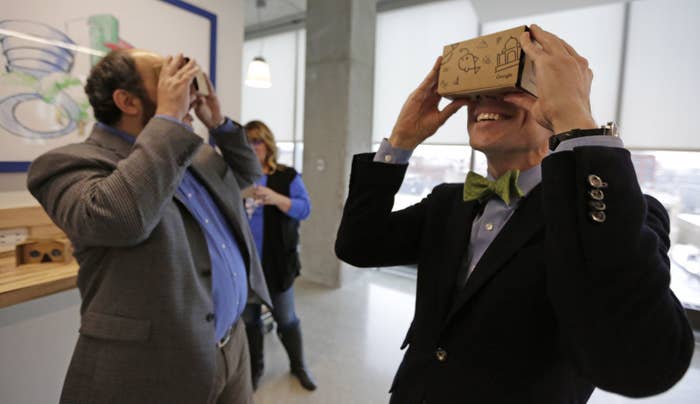
One of the things people are most excited for virtual reality to take on — after simply being able to look around a new place — is sound. Just strapping the headset on is the first step, sure, but what you hear is uncannily important in making a virtual reality experience immersive. Similar to, say, watching a horror movie with your hands over your ears so it's not as scary, watching VR without immersive sound that feels real is simply not as effective.
On Wednesday, Google added support for developers to incorporate that kind of sound — spatial audio — into Google Cardboard experiences. Spatial audio is what puts sound in front, behind, above or below you. It's different than surround sound because the sound moves with the head of the viewer, so as you turn around in VR, the sounds follow your motions.
Until now, spatial audio was limited to the higher end of the virtual reality spectrum — the Oculus Rift predecessors and other heavy duty head mounted displays— and was one of many reasons that the lighter, cheaper headsets provided a markedly different experience. The addition — which is just an SDK release, developers still have to code it into their VR experiences — means that the low price (and often free) option is catching up with the $600 Oculus Rift.
More importantly, it's an indicator that spatial audio could be coming to the virtual reality platforms that currently only support 360-degree video, but not the audio to match, like Facebook and YouTube. Both are likely working on incorporating spatial audio into 360-degree videos. Given that YouTube is a Google property, it seems reasonable that it might be nearing that milestone. (YouTube says it has, for now at least, no news on this front.)
Moving forward, spatial audio — and how people use it — will be an important thing to watch. Yes, it makes experiences more immersive, but it's also a tool that could guide viewers through experiences. One of the major problems facing VR right now is the simple fact that sometimes there's too much to see. How do you tell a story if the audience can turn around in the middle of the action or, worse, doesn't know which way to look in the first place? Many are pointing to spatial audio — using sounds as cues to point the audience's attention in the right direction — as a potentially key solution.
